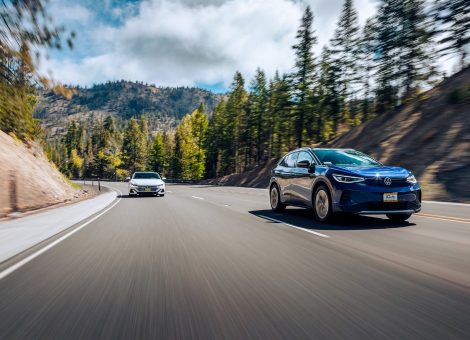World EV Day 2022: Speaking to EV drivers at Kalibrate
Kalibrate supports retailers with a wide range of concepts in devising and implementing their electric vehicle charger strategies. We lean on our heritage of using data and analytics to enable effective decision making – both from a location and a consumer profile perspective.
We’ve commissioned extensive research into how businesses and consumers are responding to the growth in EV adoption in The Electric Evolution. For World EV Day, we thought we’d get some inside insight from the EV and plug-in hybrid drivers within Kalibrate, to learn more about their experience of going electric.
A changing EV driver
In our ‘Electric Evolution’ research, we found the profile of the EV driver was diversifying. No longer can drivers be thought of as a singular homogenous group as they were in early stages of adoption. Read more about our findings.
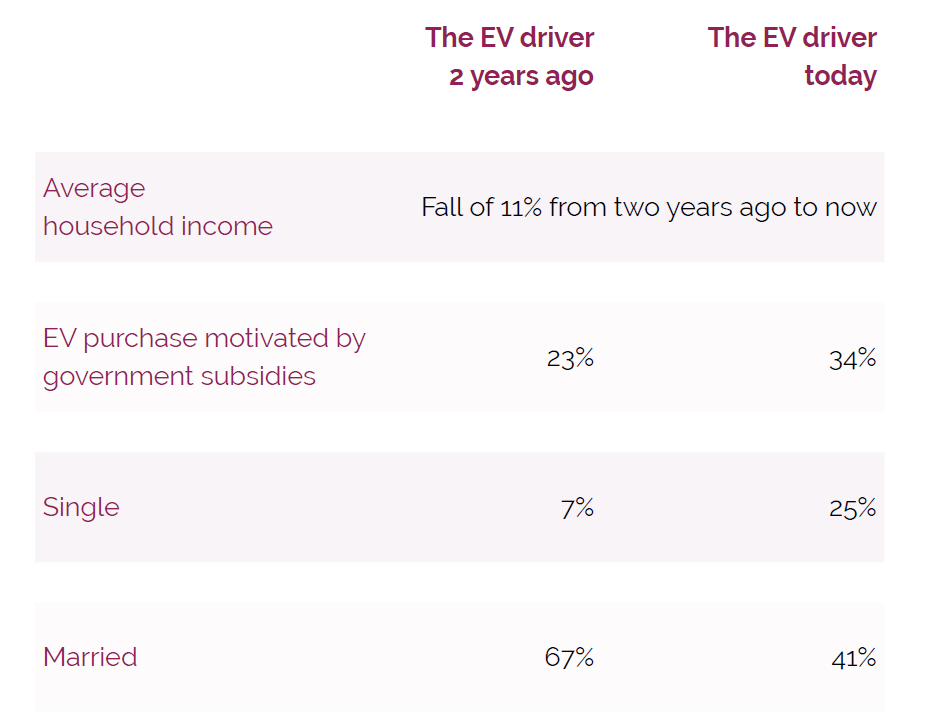
But who are the EV drivers at Kalibrate – and what were their motivations to make the transition to electric?
Where do you live and what’s your role at Kalibrate?
Anila Siraj: I live in New Jersey, and am the MD of Alternative Fuels at Kalibrate.
Dave McKerral: I live in the suburbs between Manchester and Stockport in the north of England, UK. I head up the engineering side of our products for fuel businesses.
Robert Matson: I live in Fort Worth, Texas, and I’m an account executive helping our clients get the most from our platforms and services.
Rich Wilcox: I lead the solutions engineering team, and I’m based in Cheshire, in the north of England, UK.
Glenda Bemis: I’m a senior solutions engineer, and I’m in the suburbs south of Boston, Massachusetts.
When did you purchase your EV or plug-in hybrid – is it your primary vehicle?
AS: I bought my Tesla in 2019, its my primary vehicle but we also have another ICE vehicle in our household that we use for longer journeys.
RM: I bought my EV, a 2015 Nissan Leaf, in late 2017 – so a fair while back. I would call it our secondary vehicle. I can get about 70 miles, which for a 2015 model is pretty good, but it has its limitations. We have a gas pick-up truck that we use when we need to pick up larger purchases like Home Depot and need to fill the trunk.
DM: I’ve had a Polestar for almost two years, but I had a plug-in EV for three years before that – it’s the only vehicle in the household.
RW: I bought a plug-in hybrid early this year, around April time. It’s our only vehicle.
GB: I bought my Chevy Bolt in April. It’s my primary vehicle but my wife has a 2002 Toyota Camry with over 250,000 miles on the clock – pretty impressive.
What was your main motivation to purchase an EV?
AS: I’ve been involved with the EV industry for several years now through my role at Kalibrate and was always very aware of the proliferation of electric cars. It was always something that interested me because of the environmental benefits, and I had decided a few years before my lease was up on my previous car that my next purchase would be an EV. A couple of my friends drove Tesla’s and so I had the opportunity to test drive one a few times before my purchase. The reason I chose a Tesla was because of the technology, the range and the breadth of their charging network.
DM: When purchasing the hybrid – 6 years or so ago now – I was motivated by owning something new and exciting. It had an electric range or ‘theoretical range’ of 30 miles. I worked 10 miles from home so I knew I could do my commute on full electric. As it was hybrid, I didn’t have the range anxiety as I could always fall back on gas. When I went full EV, there was still an element of something new and shiny – but I was also conscious of the environmental benefits and that I wasn’t contributing to the pollution in my area.
GB: I had a 2004 vehicle with 200k on the clock and it was time for a new car. I was interested in exploring an EV and did some research on range and tech, and it seemed the right fit. I own a house, so I knew I’d be able to charge at home, plus there were incentives from Chevy – they took care of the installation.
RM: I was in a car accident that was minor enough for no injuries but major enough to total my car. I’d been thinking about an EV for a while – for one, the environmental considerations and having one less gas vehicle on the road but also from a financial standpoint. I’d worked out the car payments would be less than we were spending on gas, so it was a pretty easy decision. For a minimal increase in electric costs at home, not paying for gas was a big benefit.
RW: The main motivation was the cheaper cost of running vs full ICE – most local journeys in the UK, we can comfortably make on electric. Environmental factors were probably secondary.
EV infrastructure and charging preferences
In the Electric Evolution, we found that drivers would like access to charging facilities at shopping venues, workplaces, and holiday parking venues. Fuel stations came out forth in our research. So, where do the EV drivers at Kalibrate charge and how has their ‘refueling’ behavior changed? Our research also found that 62% of EV drivers have encountered chargers that are out of service. Does this experience sound familiar to members of the Kalibrate team?
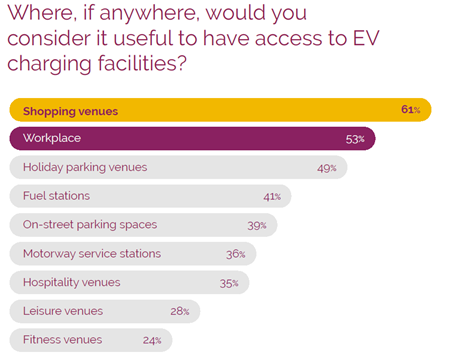
Where do you mainly charge?
AS: I mainly charge from home, but also opportunistically whenever I see an available charger if I’m out shopping at a mall or any other destination where I will be for a period of time. On longer trips, I’ll plan my route to ensure I am able to charge along the way, which is fairly easy to do in the Northeast US.
RW: I charge mainly at home. I’ve also charged in public car parks and holiday cottages when I’ve been away for a longer period.
GB: Mainly at home – the reason I went with my model is it can do 250 miles before needing a charge, so home charging is easiest. If I’m at a retail location with chargers, I’ll plug in – because why not while I’m doing something else?
DM: Most commonly at home. I don’t have a dedicated charger, so I just charge from the mains. I’m currently plugged in now at a public car park – although I couldn’t get the charger working this morning.
RM: Almost exclusively at home. I’ve used other locations when on longer journeys but there’s not a lot of EV charging in our locality even if I needed to charge when close to home.
What types of locations would you find most useful to place EV chargers?
AS: Any destination where you are for a longer period of time makes sense for top-up charging. But for fast charging, a location that has somewhere where you can perhaps grab a coffee or quick bite, a place that has seating, restroom facilities and wifi access, is always a plus.
RM: I think about the existing network of gas stations and if every third gas station had a charger, that would solve most of the problems. Obviously, that will differ by area and levels of adoption. For most day-to-day driving, there’s a gas station 5-10 minutes away. When we decide not to take the EV, it’s because we’re driving a few hours to see friends, we could ask to plug in a portable charger but that takes hours and hours. It would be so much easier if could rely on a 20-minute fast charge at a gas station around the corner.
DM: It’s a sliding scale. On one end you have low speed/low-cost charging, it’s going to be places you are for an extended period of time; car parks you might use for commuting for work and anything near residential. Then you have supermarkets and retail venues somewhere in the middle. On motorways, you want high-speed charging – something that is as close to the splash-and-go of filling up with gas.
GB: Shopping centers make sense because you’re going to be there for a decent period of time. Grocery stores would be useful too. You go there regularly, it’s part of a routine. The second element of is DC fast chargers in venues you are for shorter periods – for example, quick service restaurants and convenience locations. Finally, faster charging at rest stops on the highway when you’re on longer trips. If we rolled out in these types of settings, that would go a long way to easing range anxiety.
RW: Any retail destinations, plus town/city centers, car parks, and commercial offices.
Have you actively planned a journey around access to charging?
AS: Yes, definitely on longer journeys, where I know I will need to recharge. I make sure to plan the charging event around the middle of journey where I need a quick break.
DM: I’ve certainly planned journeys around charging in the past, yes. You piece together where you’ve going to be, and what type of change – it’s time vs facilities vs impact on your journey. Last summer, I went to the Isle of Skye, way up in the north of Scotland. I went to Glasgow on a single charge, charged overnight on a slow charge with free parking, and went on my way. I charged a few times on the route. It’s not a problem if there are facilities – coffee, at a minimum. Food is ideal as, by the time you’re done, you’re headed towards a full charge.
RW: Not so much – a hybrid means I can still rely on the gas network, so I’m never far from refueling options.
RM: I did a lot in the first couple of years of having an EV. We’d know where we needed to go and plan a route that would include charging options – we’d usually have a few charging commercial charging options.
GB: Absolutely. In the summer I went on a camping trip and that took a little advance planning. Driving from Fryeburg, Maine – about 180 miles – I knew I’d need to charge at least once to get there and back. I found a Walmart that had fast chargers, which is what I was looking for. I went shopping to get my camping supplies, got a charge, and went on my way.
From a consumer perspective, has any of your behavior changed as a result of driving an EV?
AS: Because we have a second, larger car, we haven’t necessarily had to change a lot of our behavior. But on a day to day, I will favor destinations where I can plug-in while I’m there.
RM: I’d say it’s more the general driving behavior. Taking the EV as often as possible and using the truck only when we’re doing something the Leaf cannot.
GB: I haven’t stopped at a gas station in ages, so I’ve barely been in a convenience store. I tend to try to find areas that have chargers when going out to shop.
DM: The main difference is in planning journeys, especially when going out into rural areas. When driving an ICE vehicle, you may think – well, there’s not another gas station for maybe 50 miles, and that’s a long way. When I took the journey to Skye, it could be well over 100 or even 200 miles to your next charger. You need to plan much more.
How have you found the EV infrastructure in your area?
AS: Very well supplied in both my local area and also in the wider NorthEast. I’m never too far from a charger whether that’s fast charging or slow charging. And I continuously see the network of chargers increasing as the adoption is increasing around me and more and more EV’s are on the road.
GB: It’s okay but it definitely needs improvement. Most chargers are level 2, but we don’t really have fast chargers.
RW: Not great. Fortunately, I charge at home and that suits for most journeys – and with a hybrid, I’ll never struggle for gas.
RM: It’s tough in Fort Worth. There are very few options but it’s getting a little better. That said, as we mainly use the Leaf for local journeys, there are a few times we’ll say we wish we could take the EV but cannot due to lack of charging options.
DM: Manchester is pretty terrible. When I had my plug-in, Manchester underwent a really big investment. The council had its own schemes in its car parks, but also private operators like NCPs had decent options. Now, it feels like they’ve scaled back and reduced the footprint of chargers. Many also used to be free – now most free options have disappeared.
Have you ever encountered chargers that don’t work?
AS: Yes, on several occasions. Luckily, it’s never been in a situation where I am so low on battery that I have needed to charge at that specific location. With Tesla chargers, there are always large banks of chargers and in my experience they are never all occupied at the same time so you know that you will likely always be able to plug-in.
DM: Yes, often. I think the increased frequency of use means they’re more likely to be damaged or simply not in operation. I was on a long journey and found the only charger in 100+ miles was broken – fortunately, I wasn’t at the bottom of charge when that happened.
GB: Yes, it’s pretty annoying when that happens. I’ve been lucky that there were more at the location that were working but I’ve certainly encountered out-of-service chargers.
RW: I drove to Cornwall – probably about 500 miles from home and wanted to get a little extra charge on the journey. I stopped at a motorway service station and the charger was offline. It’s annoying – and would’ve been more so if I had been totally reliant on charging.
Expectations vs reality and reverting to ICE vehicles
In Kalibrate’s research, worries about the availability of charging was found to be deterring potential EV drivers. How have the EV drivers at Kalibrate found the prospect vs the reality of owning an EV?
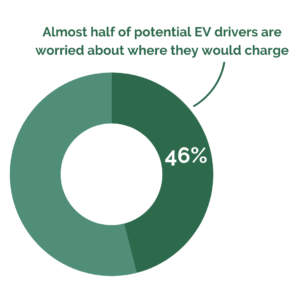
What was the expectation of driving an EV vs the reality? Did anything surprise you?
AS: I have to admit I had a little anxiety at first; would I run out of charge? would I find chargers when needed? but over time that has dwindled. My experience with my EV has been extremely enjoyable. I love the ‘clean’ drive. I was however surprised that when I went to a gas station in my EV, I actually felt out of place!
DM: Basically, never going to a filling station, as almost no gas stations had EV chargers. I think it got to around six months of ownership and I realized I hadn’t been on a forecourt since purchase.
RW: When I bought my hybrid, I expected to be constantly moving between electric and gas. In reality, every short journey was on full electric. I maybe visit a gas station every other month when I know I’ll have a long drive.
GB: It was a complete change for me because I went from a car that was very old and with limited technology. My EV is super quiet, so I barely hear it as I’m driving, and I have built-in wireless phone charging via Bluetooth.
What are the biggest challenges driving an EV has brought you?
AS: the biggest challenge is just having to plan ahead on where I will charge and the route I will take when on long trips, but even then, I wouldn’t see that as a huge challenge, just another step in my journey planning. The other thing is making sure I remember to plug-in at night!
RM: The only real challenge is trip planning. In a gas vehicle, I never need to think about where I’m going to be able to fill up.
RW: Driving a hybrid, there’s no challenge really – for the moment, I get the best of both worlds. The biggest challenge for me is remembering to charge.
GB: I can’t just assume I’ll be able to ‘refuel’ on the way for longer journeys. It’s getting better but it’s still a world away from having a gas station on every corner.
DM: Along the same theme, as my EV covers my commute easily, the challenge comes in exceptional use. I was once struggling for a charger, so I used one in a hotel car park. I received a ticket – but apparently all I needed to do was tell them.
What are the biggest benefits driving an EV has brought you?
AS: Not having to go and fill-up on gas and the cost saving that comes with it.
GB: It’s more affordable right now. I’ve worked out how much it’s going to cost on a yearly basis and it’s a fraction of what I’d be paying for gas. In addition, when I purchased, the state and federal incentives meant there were ways to off-set part of the initial outlay.
RW: Using less fuel is the big one – particularly with how expensive it’s been here in the UK recently.
RM: Not having to buy gas as regularly as we can use the EV for many journeys. So that cost saving, plus the environmental benefit is big. Without patting myself on the back too much, being confident that we’re reducing our footprint, making a positive contribution, is certainly a plus.
DM: Not having to worry about gas prices helps. But generally, I find the all-around driving experience much more pleasant. The technology is good – it feels cleaner.
Would you revert back to driving an ICE vehicle?
AS: No, I have already placed an order for my next EV, and we are already talking about making our 2nd car an EV also as more makes and models of EV’s become available.
RW: I wouldn’t revert back to ICE for my main car. Assuming technology continues to advance so range increases and the infrastructure develops to serve drivers, I would expect my next vehicle to be full EV.
GB: I wouldn’t go back. Trips are cheaper. If I want to drive 2-3 hours away and need to stop and charge, it might take me a little longer to get there. That’s no problem if it’s only going to cost me $5.
RM: We’ll always be moving forward so I‘ll always have at least one EV or hybrid. I anticipate that by the time I need to replace the truck, we’ll probably have both cars as EV or at least EV and hybrid because the technology is going to be ready. The range is so much better now if we were to buy the Leaf again today.
DM: Maybe if I wanted something that made a bit of noise to play around in at the weekend, but for a primary vehicle, no. The direction of travel is set – in a few years, you’ll get 300 miles of range and that’s only going to go up.
The views of EV drivers at Kalibrate chime with the findings of our research. Investment in EV infrastructure could alleviate journey planning concerns, but also offer a valuable pull to locations as venues become stop-off points or even destinations of choice over a competitor site that lacks EV facilities. For fuel and non-fuel retailers alike, the opportunity to monetize the dwell time associated with recharging is going to be significant.
Our drivers had both planning journeys around EV charging and actively sought retail spaces that offer charging. Strikingly, none of the EV drivers at Kalibrate expect to revert to ICE vehicles as their primary transportation.
Download The Electric Evolution, our exclusive research into the EV market.
Learn more about the Kalibrate team featured in this blog.
Meet Anila Siraj
Meet Glenda Bemis
Meet Rich Wilcox
Meet Dave McKerral
Read more articles about:
Electric VehiclesSubscribe and get the latest updates
You may unsubscribe from our mailing list at any time. To understand how and why we process your data, please see our Privacy & Cookies Policy
Related posts
Electric Vehicles
Webinar - EV analytics: New charger utilization model for Europe
Join Kalibrate and Eco–Movement as we unveil our groundbreaking collaboration to redefine EV charger utilization...
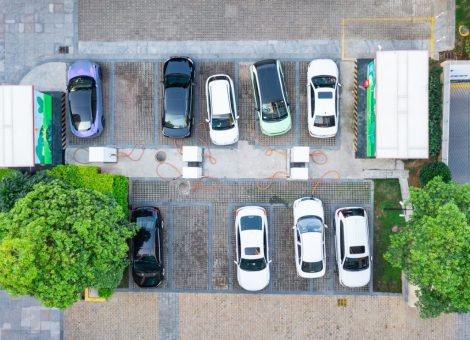
Electric Vehicles
Digested insight - Fuel volumes and EV adoption: Lessons from Canada
Is the growth of EVs a factor in Canada's surprise drop in fuel volumes?


